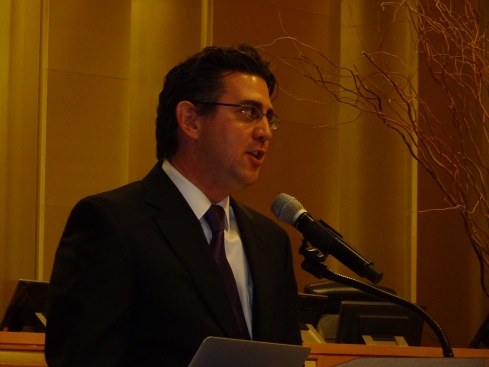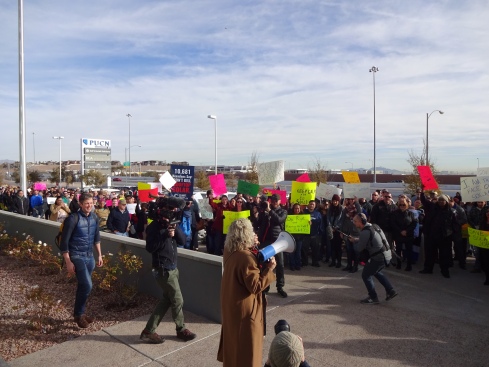As “Rebel yells” go, it may not have been as loud as those heard during the typical UNLV basketball game. But the students and listeners of KUNV, the university radio station, made enough noise to stop a management takeover by KNPR.
Still, there will be changes to the station.
On Dec. 4, a docket item that would have allowed Nevada Public Radio Corp. (NVPR) to manage KUNV was tabled, without a future date.
UNLV President Lee Jessup told the board that there have been a number of comments and suggestions made by students and the community volunteers for the improvement of the station, and he wanted to investigate those ideas further before committing to the takeover agreement.
Frank Mueller, general manager of KUNV, has been tasked with developing a new operating plan for the station. Once complete, it will be presented to Rob Ulmer, dean of the Greenspun College of Urban Affairs. “We should have a plan in place by March,” said Ulmer.
KUNV, like other public broadcasting stations, relies on listener support for its funding. During the recent Fall Pledge cycle, the station raised $60,000 from community donations. Over the years, that support has not been able to pay all of the operating expenses and, according to Gerry Bomotti, UNLV’s senior vice president for finance and business, the university has been subsidizing the station to the tune of $220,000 per year.
KUNV’s inability to generate sufficient listener-supported donations correlates with a decline in listenership. In 2014, the station was rebranded as KUNV 91.5 “The Source,” and the contemporary jazz format jumped in ratings from about 35,000 people two years ago to 55,000. However, according to the latest ratings, that number has again fallen to 38,000, which ties KUNV with three other stations in 38th place among 42 radio stations.
Under the NVPR proposal, the university would still own the licenses for stations KUNV and the two associated digital channels (HD1 and HD2). However, NVPR would assume all of the expenses of running each of the three stations.
The $220,000 that the university is spending on KUNV could then be brought back in for use in the classrooms.
NVPR is the owner and operator of public radio stations KNPR, which programs 24-hour news from National Public Radio and the BBC, and KCNV, programming classical music, along with associated digital channels. NVPR also publishes Desert Companion Magazine.
In 2014, the Corporation for Public Broadcasting (CPB), a foundation set up to distribute government grant money to public radio and television stations across the United States, gave a grant to NVPR to look for partnership opportunities and then evaluate and create business models. The result of the evaluation was a proposal to UNLV that NVPR would be willing and able to manage and operate KUNV, utilizing an economy of scale, and relieve the university of the expense of operating the station, while allowing the university to retain all of the marketing and UNLV identification.
Flo Rogers, president and general manager of Nevada Public Radio, told the board, “Twenty intense months of evaluation and negotiation went into the agreement. Together, UNLV and NVPR would create a station that better reflected the campus, and the deal would bring financial stability to KUNV.”
For NVPR, Rogers is looking at the proposed partnership as “an opportunity to address our goal of engaging younger and more diverse individuals in public media production and management.”
“It’s a win-win to create rich educational and paid opportunities for students interested in broadcast and digital media. In turn, we create a pipeline of talent for our and other local media outlets through news, music, Desert Companion, video and online internships and graduate assistant positions. In turn, we will infuse all our media outlets with younger more diverse voices and viewpoints. We can also bring more national student-oriented journalism training projects (such as NextGen) to the station through our NPR affiliation. We anticipate student opportunities will increase over time through all of our public media brands,” said Rogers.
Today, KUNV has slots for up to 50 students per semester — 30 on the air doing their own program and 20 doing news. There are also 30 community volunteers.
Will the fans of KUNV’s jazz programming be able to keep their station as it is?
“Jazz is not going away,” Rogers said. In addition to KUNV HD3, NVPR’s Classical 89.7 HD2 also programs straight-ahead classic jazz.
– See more at: http://businesspress.vegas/heard-street/kunv-rethink-underway-knpr-waits#sthash.gOfnlvwo.dpuf

